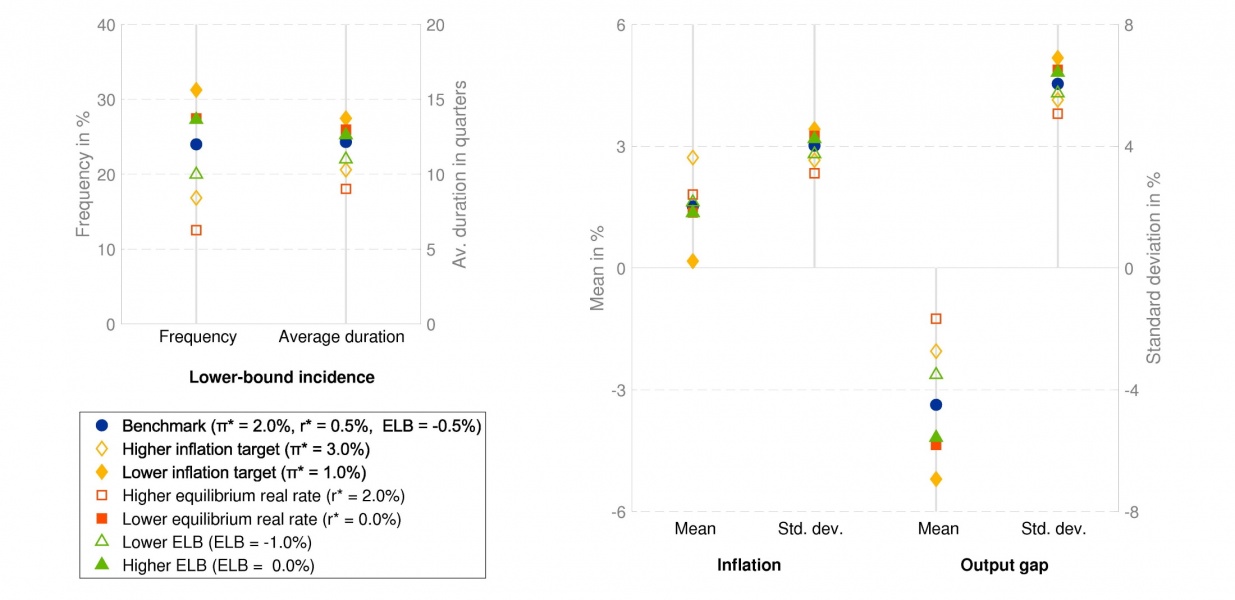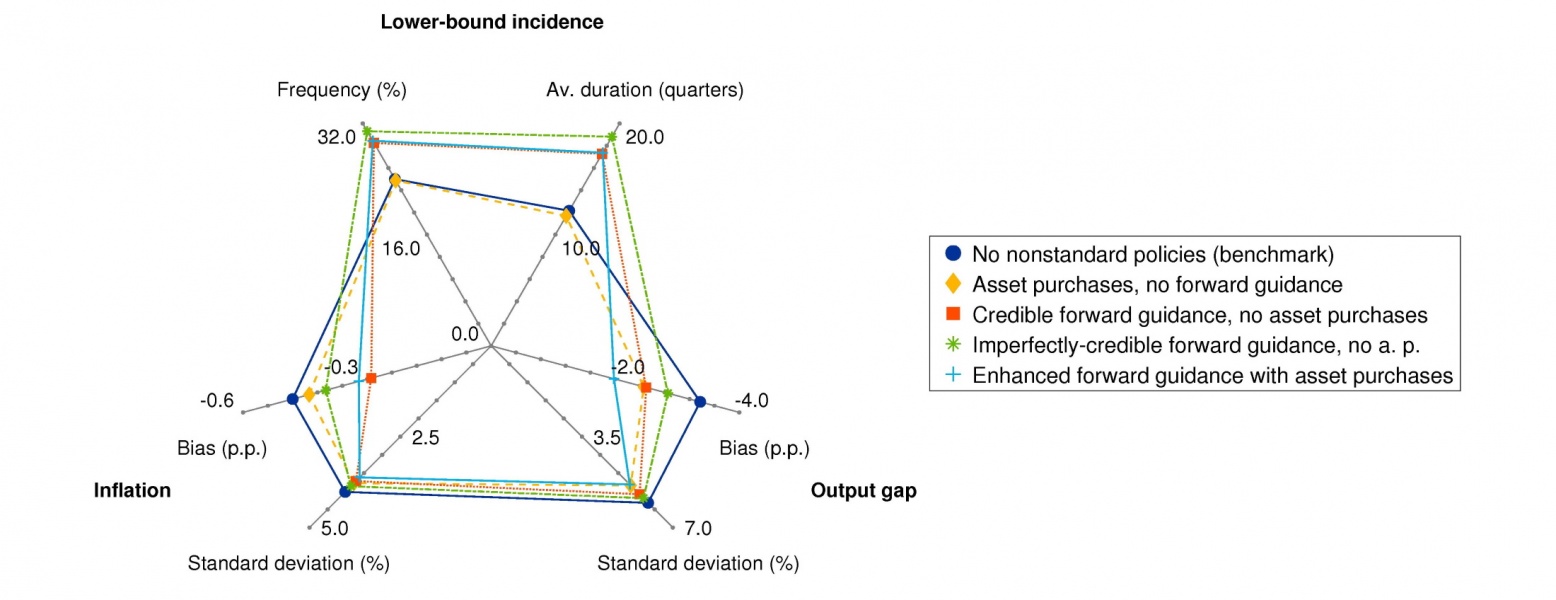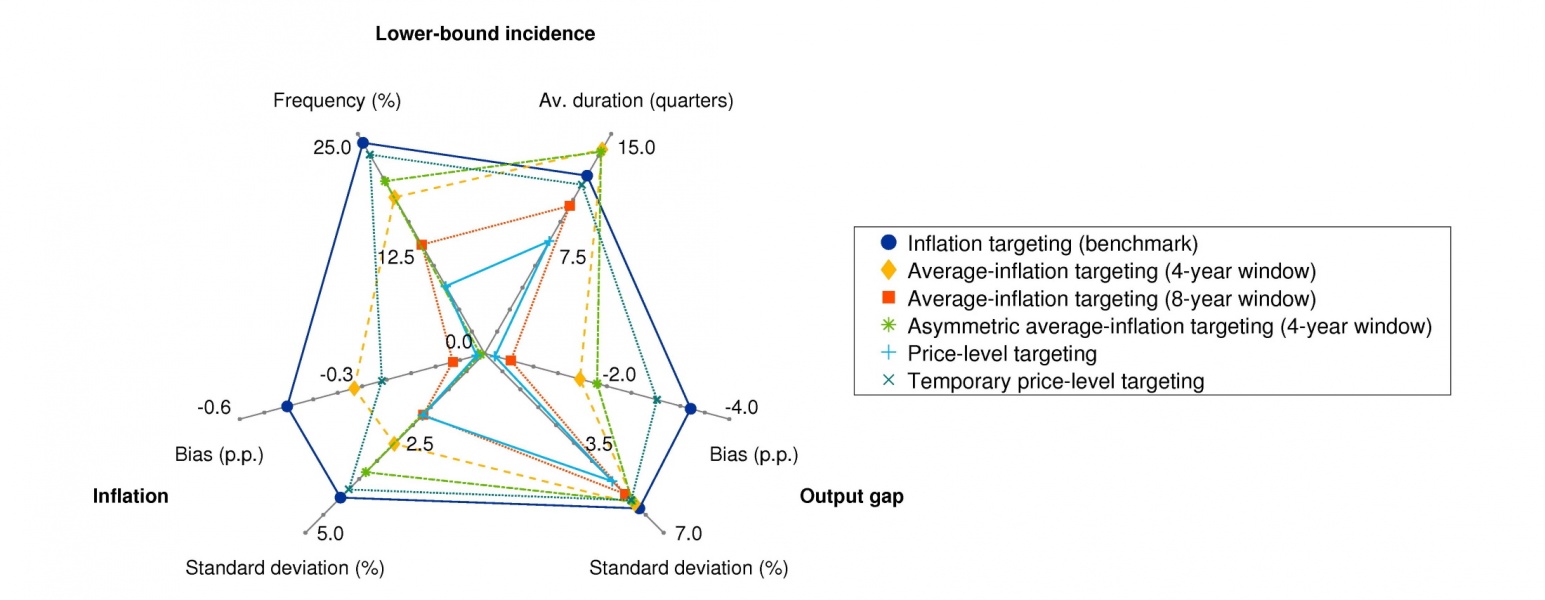References
Bernanke, B., Kiley, M. and Roberts, J. (2019). Monetary policy strategies for a low-rate environment. Finance and Economics Discussion Series 2019-009, Board of Governors of the Federal Reserve System.
Coenen, G., Karadi, P., Schmidt, S. and Warne, A. (2018). The New Area-Wide Model II: an extended version of the ECB’s micro-founded model for forecasting and policy analysis with a financial sector. Working Paper Series No 2572, ECB.
Coenen, G., Montes-Galdón, C. and Schmidt, S. (2021). Macroeconomic stabilisation and monetary policy effectiveness in a low-interest-rate environment. Journal of Economic Dynamics and Control, forthcoming, 104205. doi: https://doi.org/10.1016/j.jedc.2021.104205
Coenen, G., Montes-Galdón, C. and Smets, F. (2020). Effects of state-dependent forward guidance, large-scale asset purchases and fiscal stimulus in a low-interest-rate environment. Working Paper Series No 2200, ECB.
ECB (2021), The ECB’s monetary policy strategy statement, available at: https://www.ecb.europa.eu/home/search/review/html/ecb.strategyreview_monpol_strategy_statement.en.html
Eggertsson, G. and Woodford, M. (2003). The zero bound on interest rates and optimal monetary policy. Brookings Papers on Economic Activity, 34(Spring):139-235.
Gertler, M. and Karadi, P. (2011). A model of unconventional monetary policy. Journal of Monetary Economics, 58(1):17-34.
Holston, K., Laubach, T. and Williams, J. (2017). Measuring the natural rate of interest: international trends and determinants. Journal of International Economics, 108(S1):S59-S75.
Kiley M. and Roberts, J. (2017). Monetary policy in a low interest rate world. Brookings Papers on Economic Activity, 48(Spring): 317-372.
Reifschneider, D. and Williams, J. (2000). Three lessons for monetary policy in a low-inflation era. Journal of Money, Credit and Banking, 32(4):936-966.








